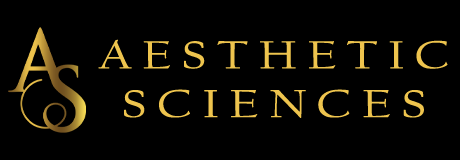PRF vs. PRP Microneedling: Which is the Best Choice for Your Skin Rejuvenation?
Aesthetic Sciences Insights
Microneedling has become a popular choice for those seeking to rejuvenate their skin and combat the signs of aging. But with so many options available, how do you decide which treatment is right for you? In recent years, two treatments have stood out: Platelet-Rich Plasma (PRP) and Platelet-Rich Fibrin (PRF) microneedling. Both offer unique benefits, but how do they compare, and which one should you choose for the best results?
Understanding Microneedling: The Basics
Microneedling, also known as collagen induction therapy, involves using a device equipped with fine needles to create micro-injuries on the skin’s surface. These micro-injuries stimulate the body’s natural healing process, leading to the production of collagen and elastin—two proteins essential for maintaining youthful, firm skin.
While microneedling alone is effective, combining it with PRP or PRF can significantly enhance the results. But before diving into the differences, it’s important to understand what each treatment involves.
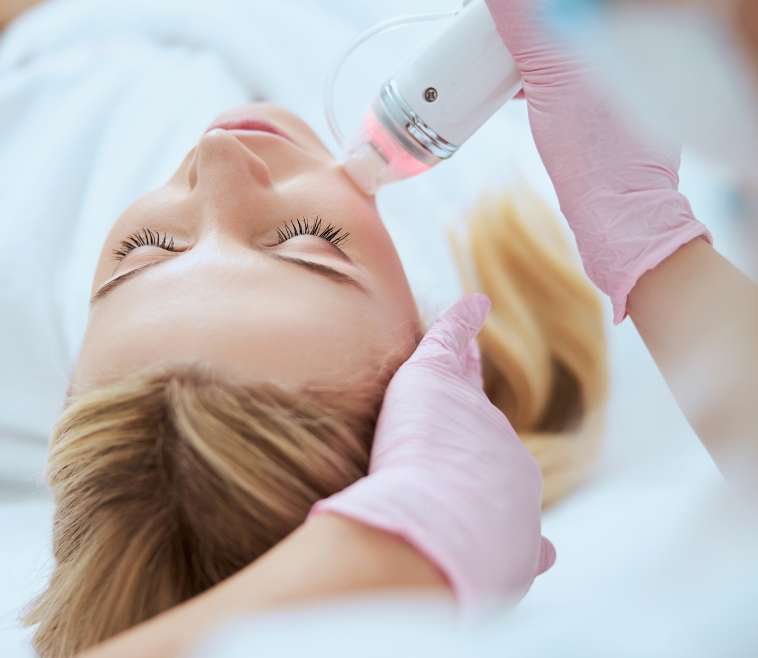
What is PRP Microneedling?
The Power of Platelet-Rich Plasma
Platelet-Rich Plasma (PRP) has been used in the medical field for decades, particularly in sports medicine and orthopedics, to accelerate healing. PRP is derived from your own blood, which is drawn and then spun in a centrifuge to separate the platelets from other blood components. These concentrated platelets, rich in growth factors, are then applied to the skin during microneedling. The growth factors in PRP accelerate the healing process, promoting quicker and more effective collagen production.
Benefits of PRP Microneedling
PRP microneedling is known for its ability to improve skin texture, reduce the appearance of scars, and minimize pores. Because it uses your own blood, the risk of allergic reactions is minimal, making it a safe and effective treatment for most people. Patients often notice smoother, tighter skin and a reduction in fine lines and wrinkles after just a few sessions.
What is PRF Microneedling?
The Next Generation of Skin Rejuvenation
Platelet-Rich Fibrin (PRF) is often referred to as the next evolution of PRP. Like PRP, PRF is derived from your own blood, but with a key difference. PRF is spun at a lower speed in the centrifuge, which allows for the inclusion of more white blood cells and stem cells in addition to the platelets. This results in a more potent healing serum that releases growth factors over a longer period of time compared to PRP.
Benefits of PRF Microneedling
PRF microneedling offers all the benefits of PRP but with enhanced results. The presence of fibrin in PRF acts as a scaffolding that helps to maintain the growth factors in the treated area longer, leading to more sustained collagen production. This means that while PRP might give you quicker results, PRF provides longer-lasting improvements in skin texture, tone, and elasticity.
For those seeking the best long-term outcomes, PRF microneedling is often considered the superior choice. In places like Scottsdale, where the climate can be harsh on the skin, PRF offers a natural and effective way to combat environmental damage and aging.

PRF vs. PRP Microneedling: Which One Should You Choose?
Now that we’ve explored what PRP and PRF microneedling involve, the big question remains: which one is better for your skin? The answer depends on several factors, including your skin type, goals, and the specific issues you want to address.
Speed vs. Longevity
One of the main differences between PRP and PRF microneedling is how quickly you can see results versus how long those results last. PRP is known for delivering quicker improvements, which can be appealing if you’re looking for faster outcomes. However, PRF’s slower release of growth factors means that while the initial results may take longer to appear, they can last significantly longer. This makes PRF ideal for those who are looking for sustained skin rejuvenation over time.
Potency and Efficacy
PRF is often touted as the more potent treatment due to the inclusion of white blood cells and stem cells, which are not present in PRP. These additional components in PRF contribute to a more powerful regenerative process, which can be particularly beneficial for those with more advanced signs of aging or deeper skin concerns.
Safety and Side Effects
Both PRP and PRF are considered safe because they are derived from your own blood, which minimizes the risk of adverse reactions. However, some practitioners argue that PRF might offer an even higher safety profile due to its lack of anticoagulants and other additives that are sometimes present in PRP. This makes PRF a more natural option, which is particularly appealing for those with sensitive skin or who prefer treatments with minimal chemical involvement.
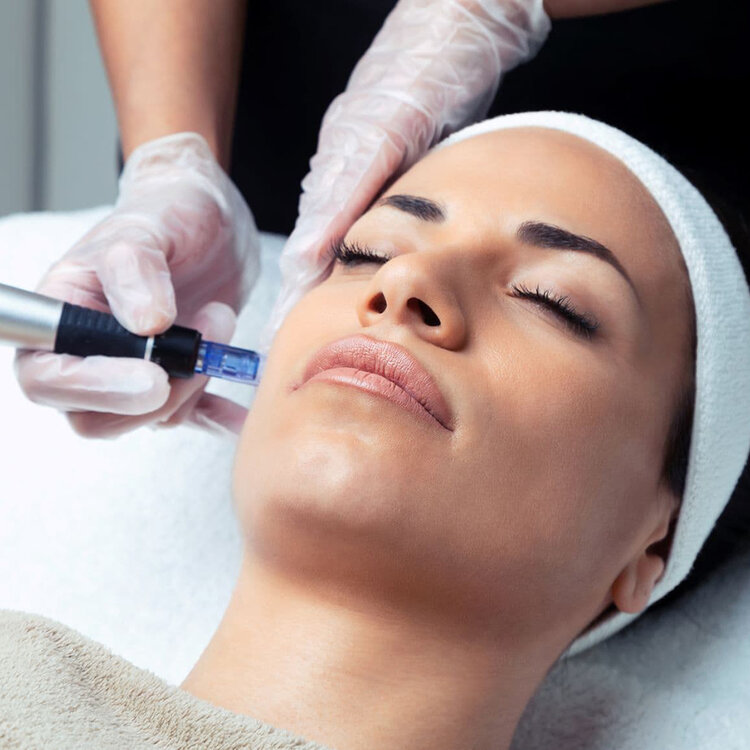
Microneedling with PRP and PRF: The Procedure
Whether you choose PRP or PRF, the microneedling procedure is relatively straightforward and involves minimal downtime. Here’s what you can expect during your treatment at Aesthetic Sciences LLC:
Consultation and Preparation
Before your treatment, you’ll have a consultation with one of Aesthetic Sciences professionals to discuss your skin concerns and goals. This will help determine whether PRP or PRF is the better option for you. During the consultation, your practitioner will also provide you with pre-treatment instructions, which may include avoiding certain medications or skincare products that could increase the risk of bruising or sensitivity.
The Microneedling Process
On the day of your treatment, a small amount of blood will be drawn from your arm. This blood is then processed to extract either PRP or PRF, depending on your chosen treatment. While the serum is being prepared, your skin will be cleansed and numbed to ensure your comfort during the procedure.
The microneedling device, which contains fine needles, is then passed over your skin, creating controlled micro-injuries. As the microneedling is performed, the PRP or PRF serum is applied to the skin, allowing it to penetrate deeply into the microchannels created by the needles. This combination of microneedling and growth factor application maximizes collagen production and accelerates the skin’s healing process.
What to Expect After PRP and PRF Microneedling
Immediate Aftercare
After the procedure, it’s normal to experience some redness and mild swelling, similar to a sunburn. This typically subsides within 24 to 48 hours. It’s important to follow your post-treatment care instructions carefully, which may include avoiding sun exposure and using a gentle cleanser and moisturizer.
Results and Follow-Up Treatments
Results from PRP and PRF microneedling develop gradually, with most patients noticing improvements in skin texture and tone within a few weeks. For optimal results, a series of treatments spaced four to six weeks apart is usually recommended. Depending on your individual goals, your practitioner at Aesthetic Sciences LLC may suggest maintenance treatments every six to twelve months.
Local Insights: PRP and PRF Microneedling in Scottsdale
Scottsdale’s dry, sunny climate can take a toll on your skin, making it even more important to choose the right treatments to maintain a youthful appearance. Both PRP and PRF microneedling offer excellent solutions for combating the effects of sun damage, dehydration, and aging. At Aesthetic Sciences LLC, we specialize in tailoring these treatments to meet the specific needs of our Scottsdale clients, ensuring you achieve the best possible results.
ARTICLE REFERENCES
- Ramaut L, Hoeksema H, Pirayesh A, Stillaert F, Monstrey S. Microneedling: Where do we stand now? A systematic review of the literature. J Plast Reconstr Aesthet Surg. 2018 Jan;71(1):1-14. doi: 10.1016/j.bjps.2017.06.006. Epub 2017 Jun 17. PMID: 28690124. Link to article
- Mujahid N, Shareef F, Maymone MBC, Vashi NA. Microneedling as a Treatment for Acne Scarring: A Systematic Review. Dermatol Surg. 2020 Jan;46(1):86-92. doi: 10.1097/DSS.0000000000002020. PMID: 31356435. Link to article
- @article{Santos2024TheBR, title={The Biological Role of Platelet Derivatives in Regenerative Aesthetics}, author={Lorena Cristina Santos and Giselle Lobo Lana and Gabriel Silva Santos and Silvia Beatriz Coutinho Visoni and Rayssa Junqueira Brigag{\~a}o and Napoliane Santos and Rafaela Sobreiro and Andreza da Cruz Silva Reis and Bruno Lima Rodrigues and Sabrina Ferrari and Claudia Herrera Tambeli and Jos{\'e} F{\'a}bio Lana}, journal={International Journal of Molecular Sciences}, year={2024}, volume={25}, url={https://api.semanticscholar.org/CorpusID:269998071} Link to article
- Pincelli, Thais P. MD*; Zawawi, Suha MBBS*; Shapiro, Shane A. MD†; Heckman, Michael G. MS‡; Hochwald, Alexander P. MS‡; Arthurs, Jennifer ARNP†; Tolaymat, Leila MD*; Bruce, Alison MB, ChB*. Evaluation of Platelet-rich Plasma and Microneedling for Facial Skin Rejuvenation. Plastic & Reconstructive Surgery-Global Open 12(5):p e5829, May 2024. | DOI: 10.1097/GOX.0000000000005829 Link to article
- Vesala AM, Nacopoulos C, Gkouskou K, Amenta F, Ruga E. Microneedling with injectable platelet-rich fibrin for facial rejuvenation. Plast Aesthet Res 2021;8:53. http://dx.doi.org/10.20517/2347-9264.2021.57 Link to article
- American Medical Journal, Platelet-Rich Plasma Applications, The Past 5 Years: A Review Article, EMJ Dermatol. 2023; DOI/10.33590/emjdermatol/10309838. https://doi.org/10.33590/emjdermatol/10309838. Link to article
- Krishnegowda R, Pradhan SN, Belgaumkar VA. A Split-Face Study to Evaluate Efficacy of Autologous Injectable Platelet-Rich Fibrin With Microneedling Against Microneedling With Normal Saline (Placebo Control) in Atrophic Acne Scars. Dermatol Surg. 2023 Oct 1;49(10):938-942. doi: 10.1097/DSS.0000000000003893. Epub 2023 Aug 10. PMID: 37584506. Link to article

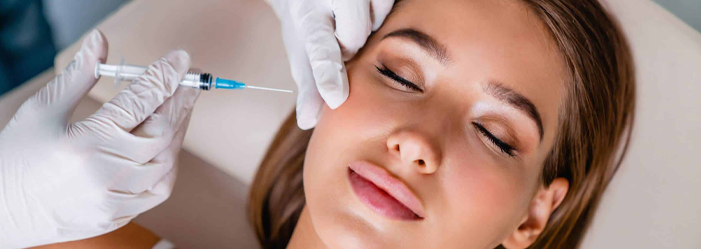
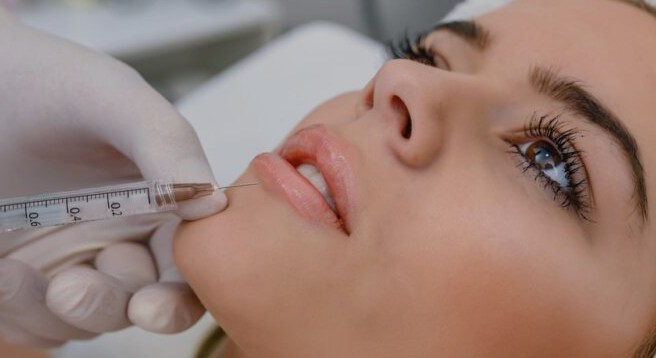
Want some inbox love?
Join our mailing list!
Thank You for Signing Up!
Welcome to the Aesthetic Sciences family! We're thrilled to have you with us.
What to expect next:
Exclusive insights: Get the latest updates on non-surgical beauty treatments, skincare tips, and more.
Special offers: Be the first to know about our promotions and special deals.
Your best skin: We'll send you expert advice to help you achieve your skincare goals.
Keep an eye on your inbox—we’ve got exciting things coming your way!
Uh oh, there was an error sending your message.
Please try again later
Scottsdale, Arizona
Aesthetic Sciences LLC.
14350 N. Frank Lloyd Wright Blvd,
Suite 2, Scottsdale, Arizonia 85260,
- Mon - Sat
- Appointment only
- Sunday
- Closed
480-394-1710
